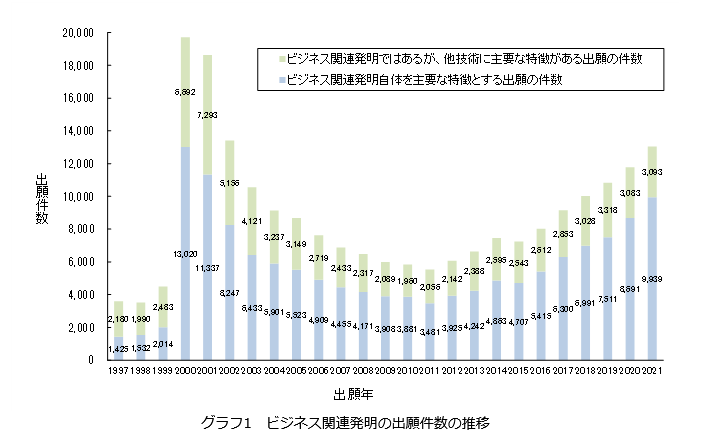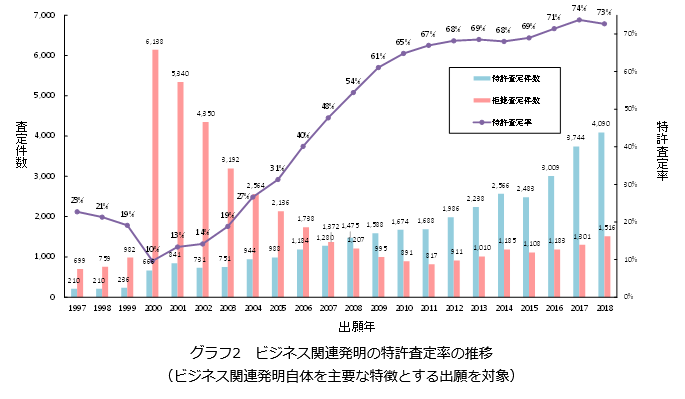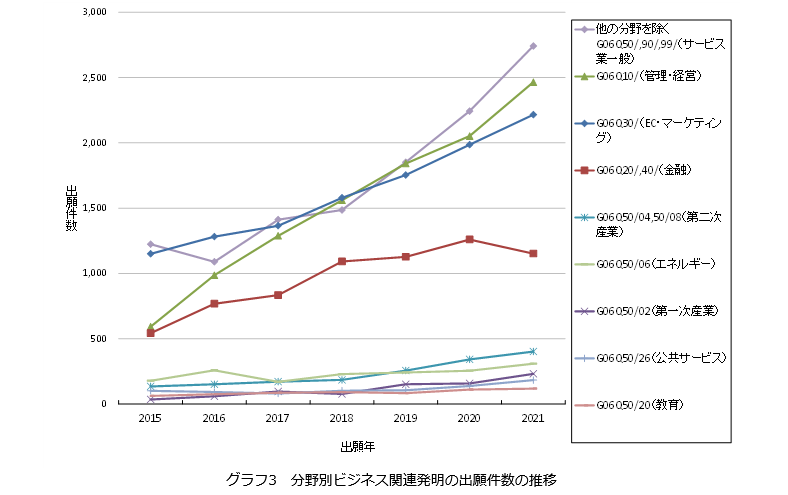table of contents
January issue [General] Newsletter

Holding a global intellectual property strategy forum
The Japan Patent Office and the Industrial Property Information and Training Center, an independent administrative agency, will hold the "Global Intellectual Property Strategy Forum 2024" on January 1, 25. The Global Intellectual Property Strategy Forum introduces the latest domestic and international topics related to management and intellectual property strategies amidst major changes in the environment surrounding business and intellectual property, thereby creating an intellectual property strategy that is linked to business strategy. This is a forum whose purpose is to provide information that is helpful to the public.
The Global Intellectual Property Strategy Forum has been co-hosted by the Japan Patent Office and the Industrial Property Information and Training Center, an independent administrative agency, since 2015.In order to allow a wide range of people to participate, the Global Intellectual Property Strategy Forum is held on-site and live-streamed. There will also be limited archive distribution.
According to the program, there will be two keynote speeches and three panel discussions, as well as a lunch session and a networking event (business card exchange).
For program details and to apply for participation, please see the "Global Intellectual Property Strategy Forum 2024" homepage below.
https://www.ip-forum2024.inpit.go.jp/index.html
Comparative research with China regarding AI-related inventions
On December 1st, the Japan Patent Office released a comparative research report on AI-related inventions between Japan and China.
This report is the result of a comparative study of the examination practices of the two countries regarding AI-related inventions by the Japan Patent Office and the China National Intellectual Property Office, in order to clarify the similarities and differences in examination practices for AI-related inventions. It is a collection of. This can be said to have clarified to some extent the current state of examination practice for AI-related inventions by both parties. The reports include "AI-related invention comparative research report (English)", "AI-related invention comparative research report (Japanese tentative translation)", and "Comparative research on AI-related inventions with China - summary of findings obtained" Three of them have been published.
“Comparative research on AI-related inventions with China: Summary of findings” is roughly as follows.
First, regarding eligibility for invention, in China, importance is placed on the presence or absence of "technical features," and if a "technical feature" is not included, it is determined that the invention is not eligible under Article 25, Paragraph 1 of the Patent Law. Ru. Furthermore, we will consider three important technical elements: technical problem, technical means, and technical effect, and judge whether the solution as a whole belongs to the technical solution described in Article 2, Paragraph 2 of the Patent Law.
On the other hand, in Japan, if it is recognized that "a unique processing device or its operating method is constructed by the collaboration of software and hardware resources", the purpose of use is Eligibility as an invention is recognized without determining whether it is technical or not.
Regarding inventive step, in China, among the "algorithmic features", those that functionally support each other and have an interactive relationship with technical features are considered together with the technical features as a whole.
On the other hand, in Japan, inventive step is examined by considering all matters specifying the invention, without dividing them into "technical features" and "non-technical features."
Furthermore, regarding enablement requirements (sufficiency of disclosure)/support requirements, the judgment results regarding AI-related inventions are generally consistent.
In addition, regarding the enablement requirement, the claim describes an invention with a generic concept, and the detailed description of the invention states that only the embodiments of "some subordinate concepts" included in the generic concept can be implemented. In Japan, it is determined that the implementability requirements are not met if the document is listed, but in China, it is determined that the implementability requirements are met.This has revealed a difference in the general judgment method.
It should be noted that this comparative study focuses on examination practices for AI-related inventions. Furthermore, the results of this comparative study are not legally binding on the two patent offices.
For details, please see the Japan Patent Office website below.
https://www.jpo.go.jp/news/kokusai/cn/ai_report_2023.html
Recent trends in business-related inventions
In November, the Japan Patent Office announced the results of a survey on recent trends in business-related inventions.
In this investigation, business-related inventions are defined as inventions in which business methods are realized using ICT (Information and Communication Technology), and specifically those inventions that are assigned G06Q as IPC or FI. It is said that the patent application was filed in 2013.
To introduce some of the survey results, looking at the number of patent applications for business-related inventions in Japan (Graph 1), the decreasing trend after the application boom that occurred in 2000 turned to an increase from around 2012, and in 2021 There were 13,032 applications. Additionally, the patent grant rate (Graph 2), which was initially low, has been increasing year by year, and in recent years has been hovering around the 70% level, which is about the same as the patent grant rate for all technical fields.


Furthermore, looking at the trends in the number of applications for business-related inventions by field (Graph 3), the following three fields occupy the top positions among business-related inventions filed in 2021.
(1) G06Q50/,90/,99/ excluding other fields (general service industry (accommodation industry, restaurant industry, real estate industry, transportation industry, communication industry, etc.))
(2) G06Q10/ (Management/management (internal business systems, production management, inventory management, project management, personnel assignment, etc.))
(3) G06Q30/(EC/Marketing (electronic commerce, auctions, market forecasting, online advertising, etc.))

For details, please see the Japan Patent Office website below.
https://www.jpo.go.jp/system/patent/gaiyo/sesaku/biz_pat.html#anchor2-2
Newsletter translated into English

Global IP Strategy Forum
The JPO and the National Center for Industrial Property Information and Training (INPIT) will hold the “Global IP Strategy Forum 2024” on January 25, 2024. The “Global IP Strategy Forum” aims to provide information that contributes to the establishment of IP strategies that are linked with management strategies by introducing the latest domestic and international topics on management and IP strategies in the midst of a dramatically changing environment surrounding business and intellectual property.
The “Global IP Strategy Forum” has been held since 2015 under the joint sponsorship of the JPO and the INPIT, and in addition to the on-site event, it will be live-streamed and archived for a limited time so that a wide range of people can participate.
According to the program, there will be two keynote speeches and three panel discussions, as well as a lunch session and a social event to exchange business cards.
For more information on the program and to register for the event, please visit the “Global IP Strategy Forum 2024” website:
https://www.ip-forum2024.inpit.go.jp/index.html
Comparative Study on AI-related Inventions with China
On December 1, the Japan Patent Office (JPO) published a report on a comparative study of AI-related inventions in China and Japan.
This report summarizes the results of a comparative study conducted by the JPO and the China National Intellectual Property Administration (CNIPA) on the examination practices of AI-related inventions in the two countries in order to clarify similarities and differences in the examination practices of AI- related inventions. This report clarifies to some extent the current examination practices for AI-related inventions in the two countries. For the reports the following three documents have been published: “Comparative Study Report on AI-related Inventions (English)”, “Comparative Study Report on AI-related Inventions (Provisional Japanese Translation)”, and “Comparative Study on AI-related Inventions in China: Summary of Findings”.
The “Comparative Study on AI-related Inventions in China: Summary of Findings” is roughly as follows.
First, as to the eligibility of an invention, in China, the existence of “technical features” is regarded as important, and if no “technical features” are included, the invention is deemed lack eligibility according to Article 25.1 of the Chinese Patent Law In addition, the three important technical elements of technical problem, technical means, and technical effect are examined to determine whether the invention as a whole falls under a technical solution as listed in Article 2.2 of the Chinese Patent Law.
On the other hand, in Japan, if a “method for establishing an specific operating method of an information processing device according to intended use through cooperation of software and hardware resources” is recognized, the invention is deemed eligible without determining whether the purpose of use is technical or not.
As for inventive step, in China, “algorithmic features” that functionally support each other and have an interactive relationship with technical features are considered together with technical features as a whole.
On the other hand, in Japan, inventive step is examined by considering all matters specifying the invention without dividing them into “technical features” and “non-technical features”.
Regarding the enablement requirement (sufficiency of disclosure)/support requirement, the results of judgments on AI-related inventions are generally consistent.
For the enablement requirement, a difference in the general method of judging is found: if a claim is directed to a generic concept but embodiments only of “part of more specific concepts” encompassed by the generic concept are stated in the description in a manner such that only the specific concepts can be carried out, the enablement requirement is not satisfied in Japan. In China, however, the enablement requirement is deemed satisfied.
It should be noted that this comparative study focuses on the examination practice of AI-related inventions. Also, the results of this comparative study are not legally binding on the two patent offices.
For more information, please see the JPO website:
https://www.jpo.go.jp/news/kokusai/cn/ai_report_2023.html
Recent Trends in Business-Related Inventions
In November, the Japan Patent Office (JPO) released the results of a survey on recent trends in business-related inventions.
In this survey, business-related inventions are defined as inventions in which a business method is realized using ICT (Information and Communication Technology), specifically patent applications with G06Q as IPC or FI.
To introduce some of the findings of the survey, looking at the number of patent applications for business-related inventions in Japan (Graph 1), the downward trend after the application boom in 2000 changed into an increase around 2012, with 13,032 applications filed in 2021. In addition, the patent grant rate (Graph 2), which was initially low, has been increasing every year, and in recent years has been in the 70% range, the same level as the patent grant rate for the entire technology field .


Looking at the number of applications for business-related inventions by field (Graph 3), the following three fields account for the largest number of business-related inventions filed in 2021.
(1) G06Q50/,90/,99/ (General service industry (accommodation, catering, real estate, transportation, communication, etc.) excluding other fields)
(2) G06Q10/ (Administration and management (internal business systems, production control, inventory control, project management, personnel allocation, etc.))
(3) G06Q30/ (E-commerce and marketing (e-commerce, auctions, market forecasting, online advertising, etc.))

For more information, please see the JPO website:
https://www.jpo.go.jp/system/patent/gaiyo/sesaku/biz_pat.html#anchor2-2

